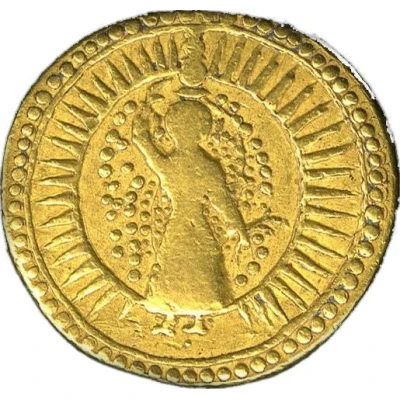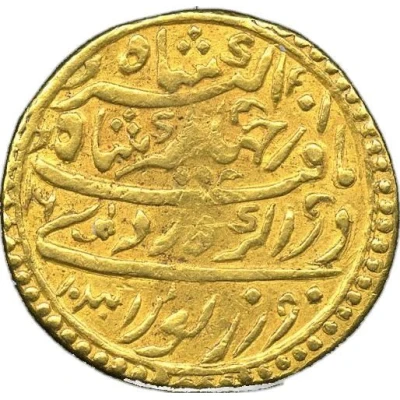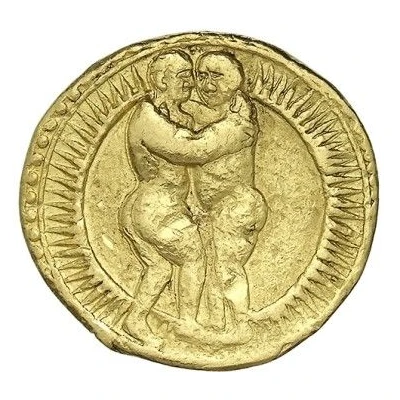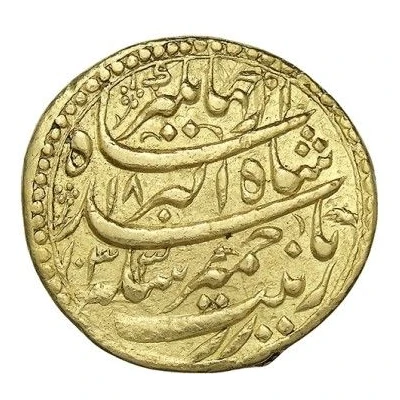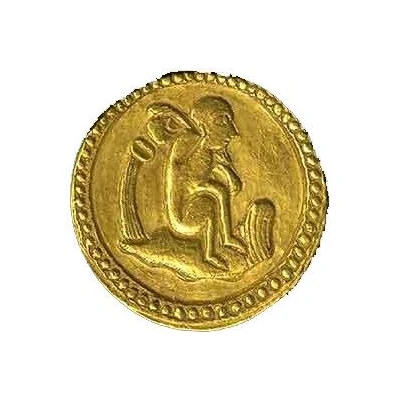
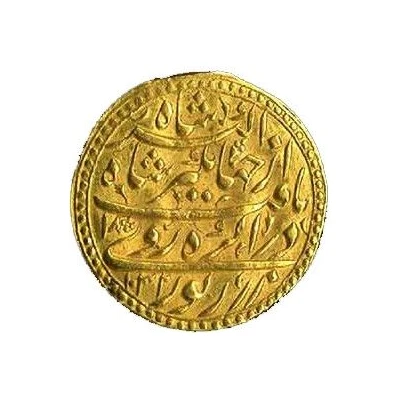

© Trustees of the British Museum
1 Mohur - Jahangir Aquarius - Agra
1032 (1623) year| Gold | 11.18 g | 21 mm |
| Issuer | Mughal Empire (India) |
|---|---|
| Emperor | Jahangir I (1605-1628) |
| Type | Standard circulation coin |
| Year | 1032 (1623) |
| Calendar | Islamic (Hijri) |
| Value | 1 Mohur (15) |
| Currency | Rupee (1540-1842) |
| Composition | Gold |
| Weight | 11.18 g |
| Diameter | 21 mm |
| Shape | Round |
| Orientation | Medal alignment ↑↑ |
| Demonetized | Yes |
| Updated | 2024-10-05 |
| Numista | N#315566 |
|---|---|
| Rarity index | 97% |
Reverse
Lettering: zar zewar dar Agra ruye yaft az Jahangir Shah Akbar Shah
Translation: Received ornament on gold at Agra from Jahangir Shah [son of] Akbar Shah
Interesting fact
One interesting fact about the 1 Mohur - Jahangir (Aquarius - Agra) 1032 (1623) coin from the Mughal Empire (India) is that it features a unique blend of Islamic and Hindu astrological symbols. The coin's obverse side bears the inscription "Jahangir, the Sultan of the World" in Persian, while the reverse side features the Hindu astrological symbol of the zodiac sign Aquarius, which is also the symbol of the month of February in the Hindu calendar. This blending of religious and cultural symbols reflects the diverse and syncretic nature of the Mughal Empire, which was known for its tolerance and acceptance of different faiths and traditions.
